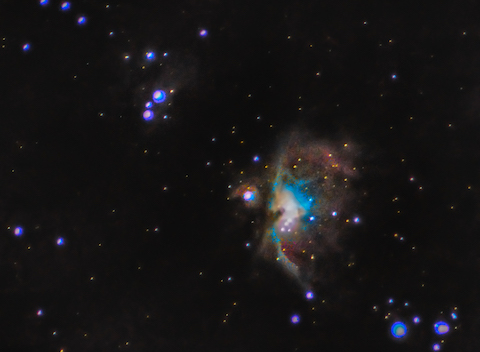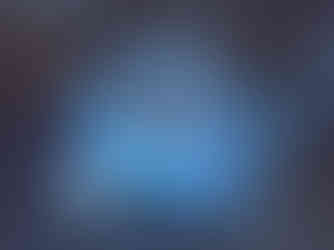The easiest Nebulae for Beginner Astrophotographers
- Antoine & Dalia Grelin
- Apr 14, 2021
- 6 min read
Updated: Jun 7, 2023
Welcome to our guide about the easiest nebulae for beginners to photograph! We have selected what we believe are the best five nebulae to attempt as a beginner astrophotographer. We will go through each of them and tell you why they can be imaged easily. We'll also tell you when they are available in the sky and some tips on how to get the best possible result!
Are you a complete beginner and do not own a telescope, a tracker, or any filter yet? No problem! All the nebulae below can be photographed with a simple DSLR camera, affordable lens and tripod! We'll make sure to add an image with and without a telescope and tracker for each object.
Let's get started!

You can also read our post about the easiest galaxies for beginner astrophotographers
Messier 42 - The Orion Nebula
Magnitude: 4.0
Size: 65 x 60 arcmin
Constellation: Orion
Let's start this guide with the elephant in the room: The Great Orion Nebula!
Messier 42 is by far the easiest nebula to photograph, and some might even say it is the easiest deep-sky object of all! The Orion Nebula is bright, large, and absolutely beautiful. M42 is the type of object you'll want to re-capture every single year and never get tired of!
Within the Orion Nebula is a bright cluster of stars called the Trapezium. It is so bright that the core of the nebula will appear completely blown out in most images taken by beginners. An advanced method you can use when photographing M42 is to take two sets of exposures: one set of short exposures for the bright core and one set of long exposures for the outer gases. When combined, you should be able to have an impressive Orion Nebula with both a detailed core and a lot of fainter gas visible all around. You might even be able to see the individual stars in the Trapezium!
The Orion Nebula is easily photographed with any telescope and any camera. You can also capture it wide-field using a DSLR camera and a lens. A tracker or a motorized mount will of course help, but the nebula is so bright that you can still get a great result untracked!
We suggest using a lens between 50 and 300mm of focal length. At 50mm, you will be able to see the entire Orion Region (see our image on the right of Barnard's Loop for comparison), so M42 will look very small but you will be able to take longer exposures due to the wide field of view. With a telephoto lens, M42 will look much larger, but you will be limited to very short exposure times in order to avoid star trails.
Left: Our image of M42 with just a DSLR, 300mm lens and a tripod
Right: Our image of M42 with a DSLR, a motorized mount and a telescope
IC 434 - The Horsehead Nebula
Magnitude: 7.3
Size: 8 x 6 arcmin
Constellation: Orion
IC 434 is one of the most recognizable nebulae in the night sky. It lies very close to Messier 42 in the constellation Orion, and stays up in the sky for a long period of time.
The Horsehead Nebula is much fainter than M42, and is trickier to capture. Despite that, it is still an easy target for beginners who have the patience to take as many shots as possible before stacking. The key here is to show as much of the hydrogen alpha gas as possible, which will in turn reveal the dark head of the horse in the foreground.
Below to the left is our shot of IC 434 using an old DSLR camera, an inexpensive lens and a small tracker. To the right is the same object a few years later, using a small telescope and a monochrome camera, from the city!
Left: Our image of IC 434 with just a DSLR and a small tracker
Right: Our image of IC 434 with a monochrome camera and a telescope
M8 & M20 - The Lagoon & Triffid Nebulae
Magnitude: 6 for M8, 6.3 for M20
Size: 90 x 40 arcmin for M8, 28 x 28 arcmin for M20
Constellation: Sagittarius
Two bright targets that are so close to each other that you may be able to capture both at the same time!
Messier 8 (the Lagoon Nebula) and Messier 20 (the Triffid Nebula) are both located in Sagittarius. M8 is very large, and full of hydrogen alpha gas, that is illuminated by a bright star cluster within the nebula. M20 is a smaller but equally bright nebula that lies near M8.
If you are planning on imaging this pair of objects with a medium to large size telescope, we suggest going after each target one by one. On the other hand, it is very simple to frame both of these nebulae in the same field of view if using a small telescope or no telescope at all!
M8 and M20 can be easily photographed wide-field both with and without a star tracker. We recommend using a DSLR lens that is at least 85mm in focal length to really capture all the gases around the nebulae and have some great details inside the objects.
M8 & M20 untracked. 200mm lens at f/2.8, 2.5 second exposures at ISO 4000. 285 frames. Image by Dahlia Ambrose.

Want to learn all aspects of astrophotography in the most efficient way possible?
The Galactic Course includes a LIFETIME membership that gives you unlimited access to all current and upcoming astrophotography content. Step into an ever-growing realm of knowledge and learn at your own pace. Make life-long friends and connections with other members, and get tips from instructors that truly care about your journey and progress under the night sky.
NGC 2244 - The Rosette Nebula
Magnitude: 9.0
Size:1.3 x 1.3 degrees
Constellation: Monoceros
The Rosette Nebula is a large nebula in the Winter constellation Monoceros. It contains a bright star cluster near the core, which illuminates the gases all around (very similar to M8!).
NGC 2244 is a fantastic narrowband target, but it is also a great object to image without any filters. Although it is overall dim, it is not impossible to photograph the Rosette with just a DSLR camera and a tripod. Tracking will definitely be very useful here as long exposures will be the only way to reveal the faint filaments of gas all over the object.
If you are planning on imaging this target without a telescope, try to also include the Christmas Tree Cluster and Cone Nebula in there! These objects are not too far from one another that you are likely to see them all in your field of view.
The Rosette Nebula with a reflector telescope in narrowband
Rho Ophiuchi
Magnitude: 4.6
Size: 4.5 x 6.5 degrees
Constellation: Ophiuchus
The Rho Ophiuchi Cloud Complex is not really a nebula per se... it is instead a handful of very bright stars shining against clouds of interstellar dust.
Because we do not have a "The Easiest Very Bright Stars Shining Against Clouds of Interstellar Dust for Beginner Astrophotographers" category, we decided to include Rho Ophiuchi in here!
Rho Ophiuchi is located in the constellation Ophiuchus, and rises just before the bright Summer Milky Way band in the northern hemisphere. This is a very large target that is not really possible to capture with a telescope, unless you are using a full-frame camera on a wide instrument.
We therefore recommend to channel your inner wide-field astrophotography skills and capture this target with a DSLR camera and a fast lens. We imaged Rho Ophiuchi with a star tracker and a 50mm lens, and the result can be seen on the right image below! It is also possible to photograph Rho Ophiuchi without a star tracker, and just use a DSLR camera, a lens, and a tripod, as proven in Dahlia Ambrose's fantastic image on the left. For this shot, Dahlia used a 85mm lens at f/1.8 and took 300 x 6 Sec shots at ISO 800.
Left: An image of Rho Ophiuchi with just a DSLR and a tripod, by Dahlia Ambrose
Right: Our image of Rho Ophiuchi with a DSLR and a tracker
Final Thoughts
We hope this guide was helpful, especially if you are a beginner astrophotographer! If you are reading this in Spring, and are saddened to realize that there aren't really any good nebula during this season, you might want to instead take a look at our post on the easiest GALAXIES to capture!
Also, make sure to read our seasonal guides about the best targets to capture all year long.
Summary of the easiest nebulae for beginner astrophotographers:
The Orion Nebula (M42)
The Horsehead Nebula (IC 434)
The Lagoon and Triffid Nebulae (M8 & M20)
The Rosette Nebula (NGC 2244)
Rho Ophiuchi
Clear Skies,
Galactic Hunter
ASTROPHOTOGRAPHY TUTORIALS
GALACTIC HUNTER BOOKS





































